By Ed Boitano; photographs by Deb Roskamp are noted in the text.
I have a great affection for swimming pools. Jumping into refreshing, crystal clear waters in Southern California has always had a way to soothe my senses. I’ve noticed when my Pacific Northwest friends and families realized that I had a swimming pool in my backyard in Burbank, some were curious and wondered why someone like me, a former Seattleite with a fondness for rain, should actually have a pool. I would remind them that having a pool down here is not uncommon. In fact, due to the heat, our pools are often not heated.
Once, after an exhausting final lap in my pool, I remembered a story when a former U.S. president was asked what we would like to show Mikhail Gorbachev when he visited Southern California. He said that he would like to take him for a plane ride over the San Fernando Valley to show him that American workers live harmoniously and have the freedom to afford swimming pools. And the former Soviet President supposedly replied, though it was never confirmed, for the plane ride never really happened, In my nation, our workers have the freedom to live without poverty. Yet, they managed to forge a mutual respect between one another, that led to a friendship, a friendship which ultimately thawed the Cold War.
Later, when first lady Nancy Reagan led Madame Raisa Gorbachev on a tour of the White House grounds, she was unable to show her its swimming pool, for a former president had turned it into a pool for the press. Eventually, the former president would find himself drowning in his own pool of remorse.
Fortunately, he was able to swim to the edge of the pool, in realization of the harm he had done to his nation. And, as this is an American story, where past misdeeds generally transition into the good, our former president reinvented himself, and joined the human race. With thanks to John Lennon, for allowing me to mutilate his lyrics in the song, Instant Karma.
The birth of the world’s first Swimming Pool…
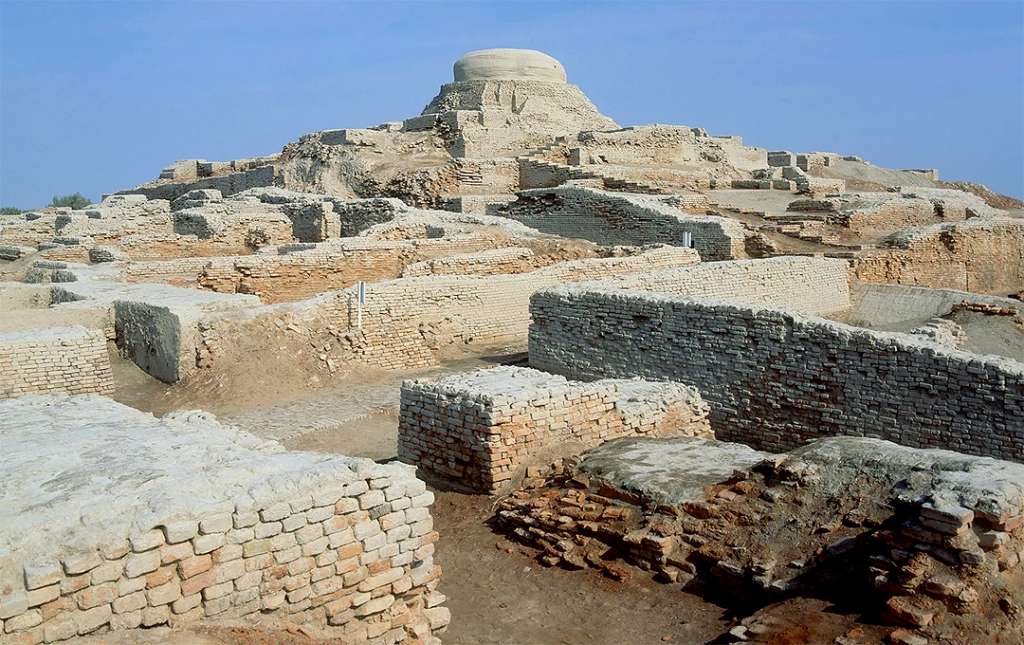
The Great Bath of Mohenjo-Daro.
The Great Bath of Mohenjo-Daro is considered the earliest public water tank of the ancient world. Archaeological evidence indicates that the Great Bath was built in the third millennium BCE, soon after the raising of the citadel mound on which it is located.
And the birth of my first swimming experience…
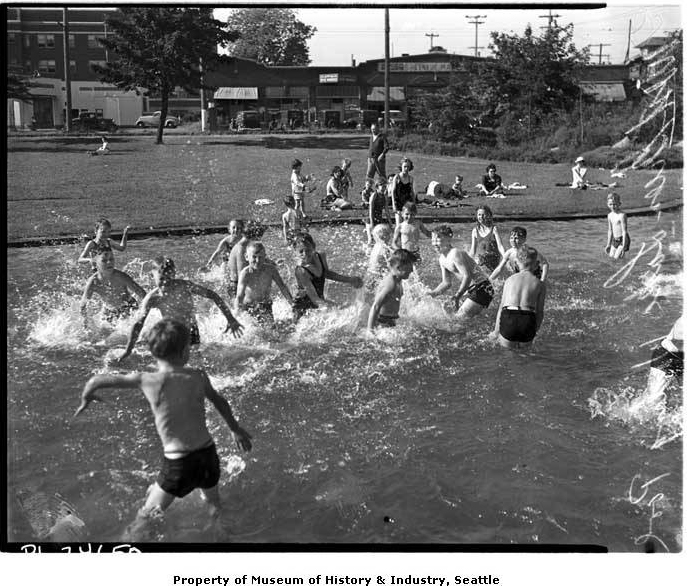
The Green Lake Children’s Wading Pool in Seattle.
In the early days of my Seattle youth, nothing signaled the beginning of summer quite like the Green Lake Wading Pool. With the mercury rising, this little aquatic sanctuary in the heart of Seattle was the premier venue for us kiddos to wade, splash and beat the heat. As an unsteady swimmer, I found its shallow waters to be particularly enjoyable, for my feet could always touch the bottom of the pool.
Through the years, I’ve noticed some pools have themes…
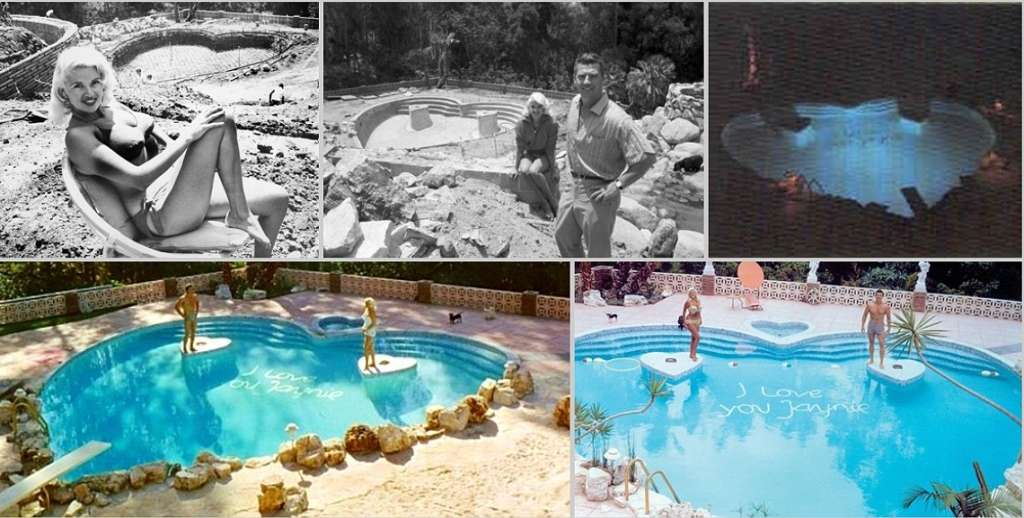
Jayne Mansfield’s heart-shaped pool of love in Beverly Hills, built and designed by Mickey Hargitay.
While others have themes of history…
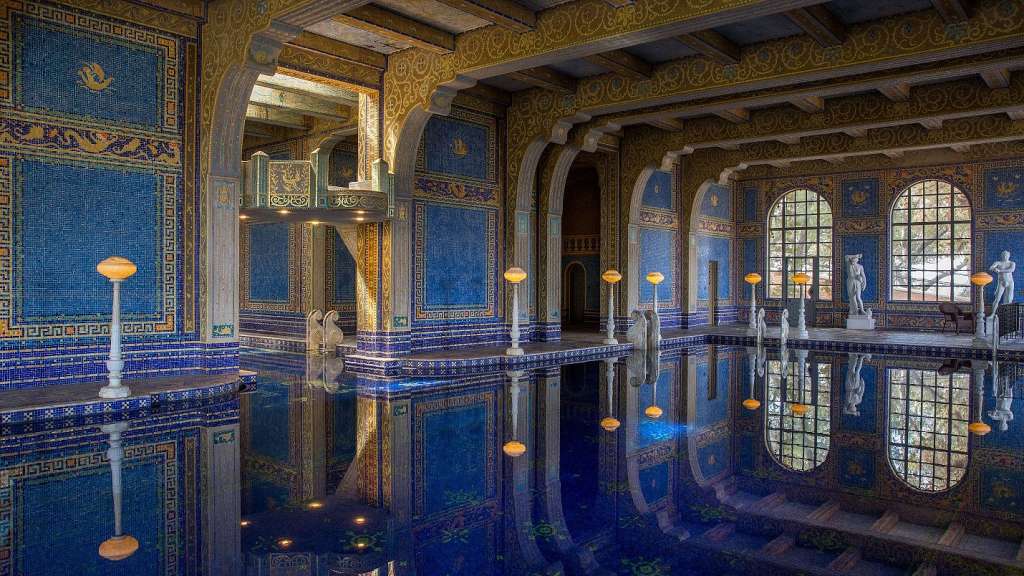
The indoor Roman swimming pool at San Simeon.
And, with some, you can look up and look down…

The swimming pool on a sheet of glass, at Houston’s Market Square Tower.
But, if it was during lunch hour, you’d barely see a soul on the streets, for most Houstonites have taken a reprieve in a cool, underground city to avoid the blasting heat. Houston’s underground is a bit of a reverse, though, modeled after, Montreal’s own winter underground world, where a Montréaler can simply traverse throughout it without even wearing a cold storage coat.
And then look down again…
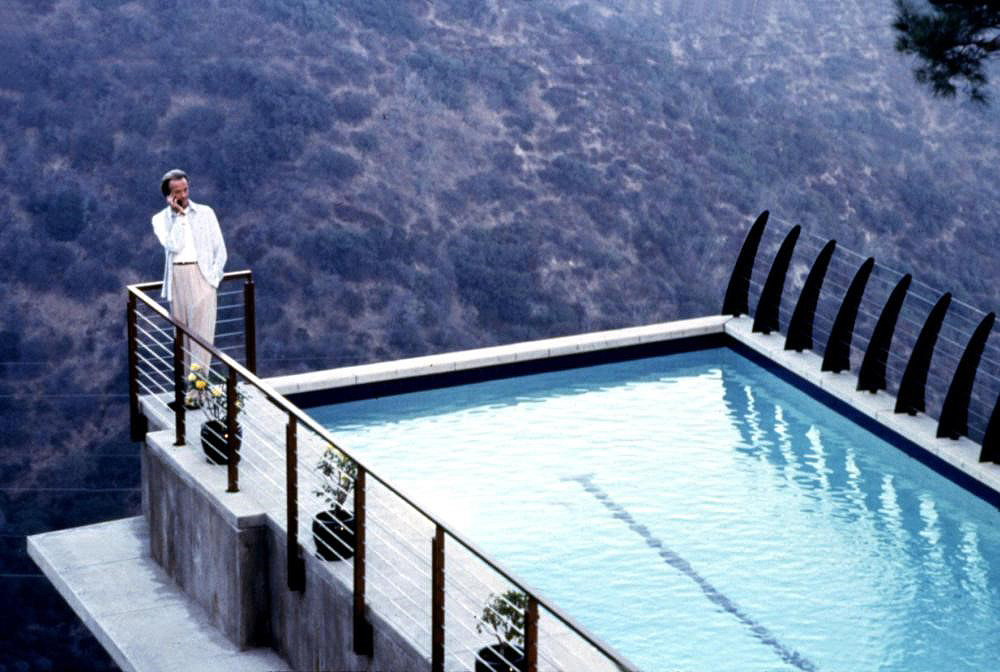
The swimming pool used in Steven Soderberg’s The Limey.
This time look down at the vegetation in the Hollywood Hills, but be warned, it’s the swimming pool used in Steven Soderberg’s The Limey, and you might find yourself falling head-first into the ground. That is, if British actor, Terence Stamp has crashed the party and is in the hunt for the murder of his estranged daughter, who he last saw when he was in a British prison very long ago.
You can use a lagoon as your own swimming pool…
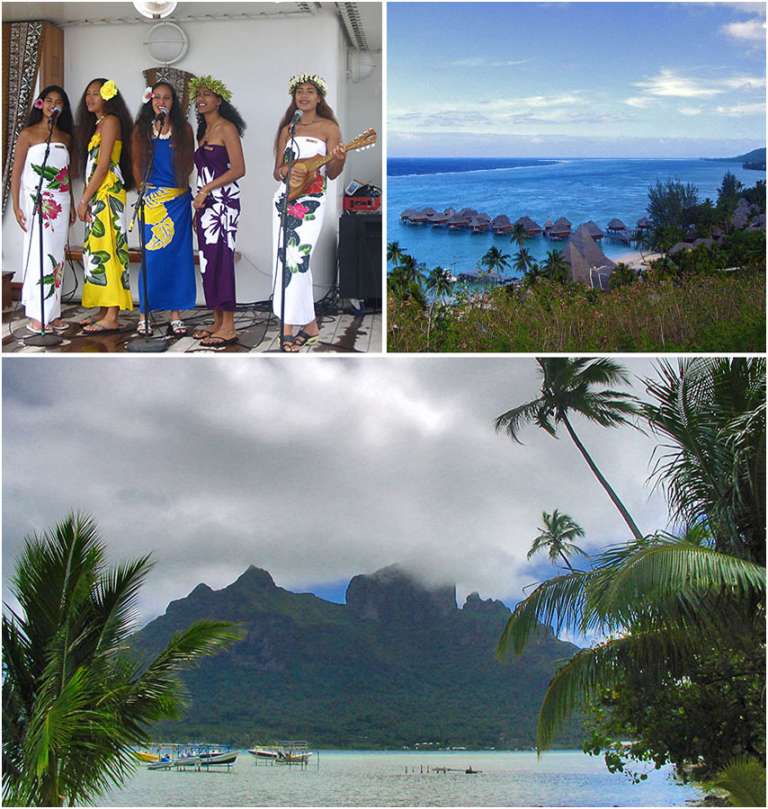
At an alluring lagoon in Bora Bora.
The Pacific Ocean island of Bora Bora is a paradise with its breathtaking lagoons, crystal-clear streams, lush jungle vegetation and soaring mountains. Bora Bora provides a genuinely remarkable experience in natural splendor, along with a unique Polynesian culture.
Or at a bay…
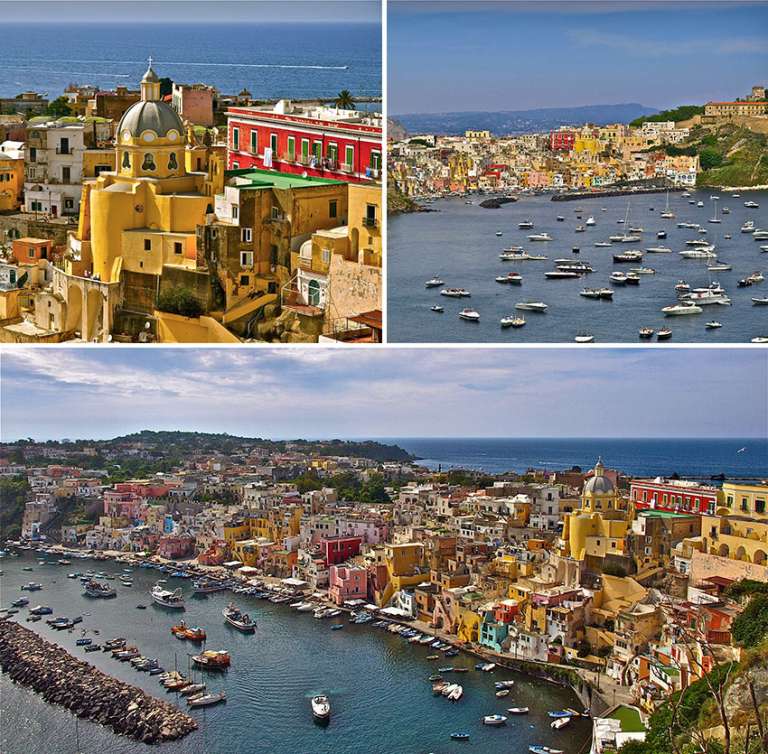
Isola di Procida.
In the Bay of Isola di Procida, Naples’ smallest island, is where you’ll find that the people of this quintessential Mediterranean paradise are more than just proud of what they gave to the world: UNESCO certified Pizza Napoletana’s marinara, Margherita, and Margherita extra.

So friends, Romans and countrymen, please take note: Pizza Napoletana is the first and only real pizza on the globe. Anything else is a mere imitation, despite your preference for its crust and flavor in your mouth. With thanks to Amirali Mirhashemia for the enlightenment and the photograph, via Unsplash, above.
And, if you desire a spa experience in the Land of Fire and Ice…
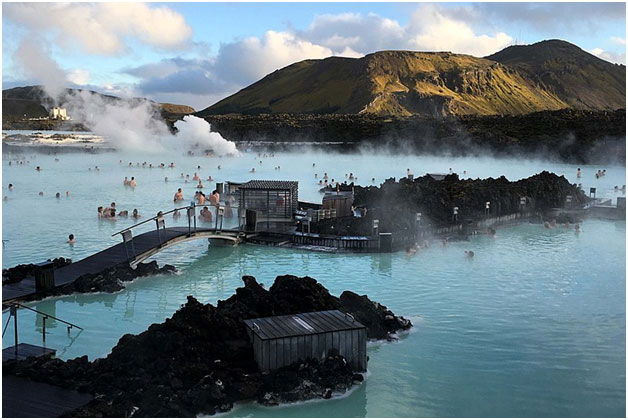
Iceland’s Blue Lagoon.
Iceland’s Blue Lagoon is the island nation’s number one tourist attraction. Sadly, the Blue Lagoon is currently closed after the volcanic eruption that began at Sundhnúkagígar on March 16, due to its close proximity to the eruption site.
The countdown begins for the selection of the FIVE (5) best swimming pool in the world, but let’s start with an Honorable Mention…
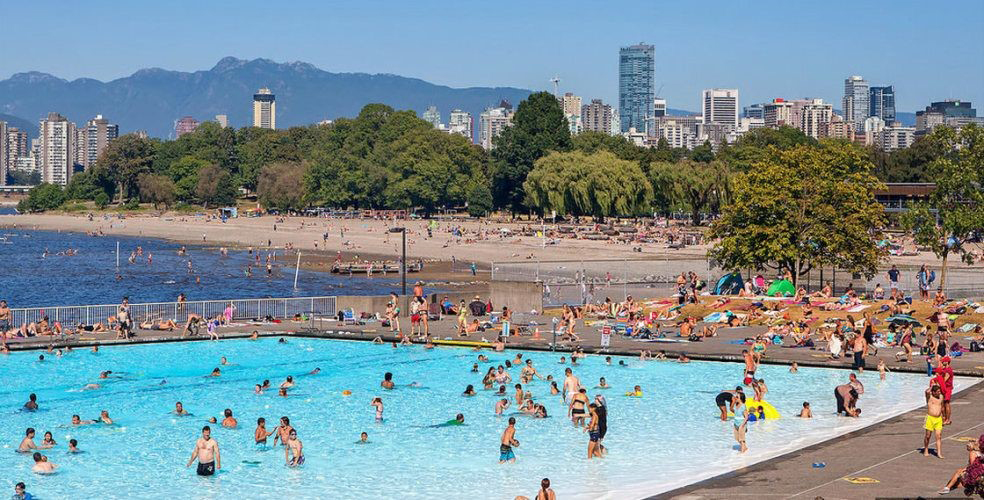
The natural salt water swimming pool at Vancouver’s Stanley Park Seawall.
The saltwater Kitsilano Pool is located at Vancouver’s Stanley Park Seawall, formerly known to the Coast Salish people as Skwa-yoos. The Kitsilano Pool opened in 1931, and was originally billed as North America’s Largest Swimming Pool, with the size of 660 by 200 feet and 2 by 8 feet deep, covering 2.3 acres, and containing 1.3 million liters of water. It was filled by tidal water from English Bay, where mud sharks, octopuses and other sea life were occasionally found. It was designed as a spot for bathers to swim during low tide, and had a sandy bottom until the 1960s, when it was filled with concrete. Over 5,000 swimmers arrived on opening day to experience the new oceanside swimming pool.
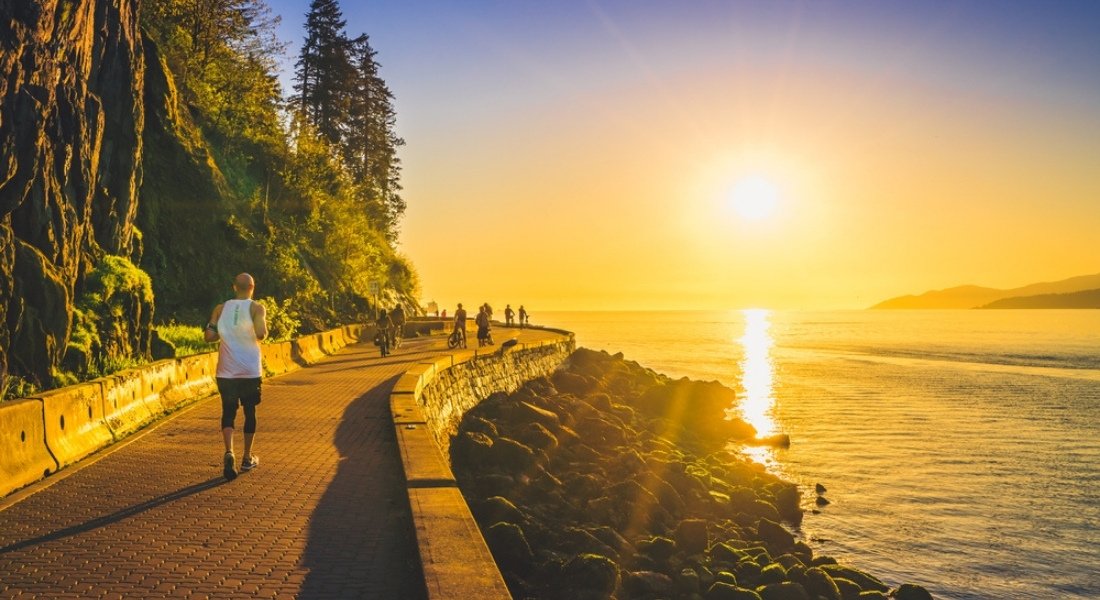
The Stanley Park Seawall is a popular running and biking route. On the beach you can watch people fishing, sitting on logs, laughing, chatting, playing music and waiting for the final glimpse of the sun in the late afternoon or early evening. My own senses have always been endowed with tantalizing aromas from Robsons Street’s cutting-edge restaurants, where many seafood entrees were caught that very day at the bay
And at Number Five (5), the graceful and culturally vibrant swimming pool at…
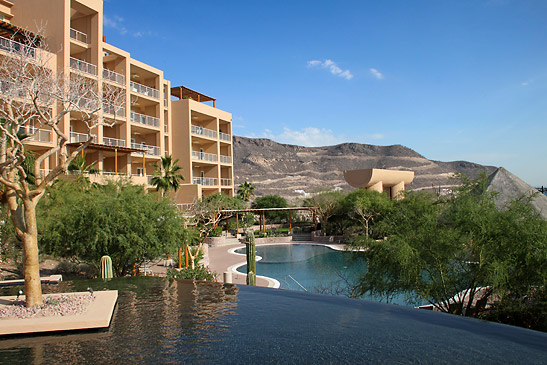
The Costa Baja Resort & Spa in La Paz, Mexico.
As the first 5-star resort in La Paz, Costa Baja Resort & Spa is just ten minutes from downtown La Paz, set on the Sea of Cortez, overlooking a 250-slip double-basin marina and a white sand beach. At the resort and spa, you’ll discover that Baja Lower California Peninsula is much more than the birthplace of fish tacos and hot dogueros, (the La Paz hot dog). You’ll also find margaritas, stronger cerveza, colorful homes, music and folkloric dance and citizens with a higher literacy level than the U.S. Sometimes it’s hard to take it all in with the sun setting on the glimmering Sea of Cortez, which Jacques Cousteau christened the world’s aquarium, with one of the planet’s most abundant ecosystems. But, remember to bring your bathing suit and scuba gear.
La Paz is dubbed The Peace, so not exactly sure why I was unable to notice any murders, rapists, drug cartels and some real mean hombres. Perhaps I was too busy reading that the national cuisine of Mexico was inscribed by UNESCO on their List of the Intangible Cultural Heritage of Humanity. I beg to wonder if any of the rapists, drug cartels and some of those real mean hombres, ever smuggled over the U.S border: corn, beans, tomatoes, avocados, squash, chili peppers, wild turkey hens for Thanksgiving, vanilla, or Cacao beans – you know, the bean which gave the world chocolate. Now, I’ve just stolen and revised a line from T-Boy restaurant critic, Audrey Hart, who recently wrote and revised from Adam Sandlers’ Chanukah Song: “And what do they all have in common? All Mexican!“
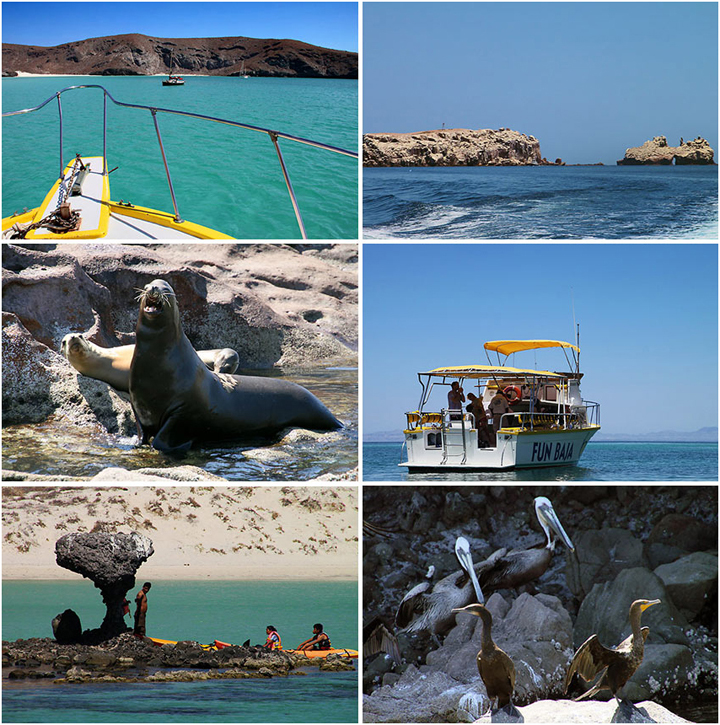
Yet, I struggle to understand why La Paz experiences only a fraction of the robbery, rape, assault and murder found in most US cities, according to the United Nations Office on Drugs and Crime. In fact, it’s so safe that the infamous drug cartel, Joaquin El Chapo Guzman made La Paz his hideout. And still I wonder, why is Mexico allowing reckless Americans into their country?
Number Four (4). The many swimming pools at…
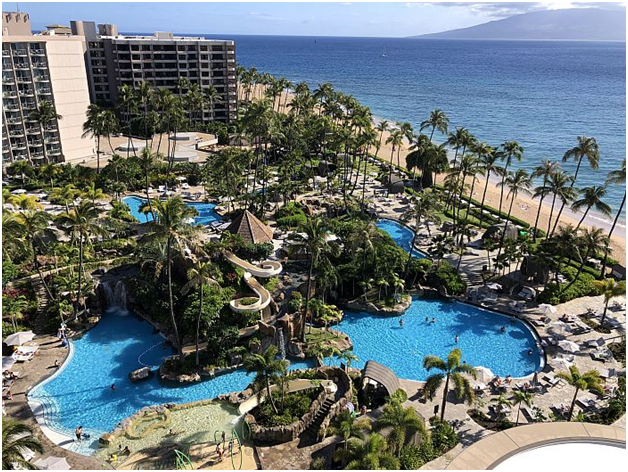
The Westin Maui Resort & Spa at the Ka’anapali Beach Resort.
By taking a plunge at the Westin Maui Resort & Spa, you will be on your way to a journey through long channels of clear water, where you will swim under water falls, with the destination of a swim-up bar, or, should I say, a secret swim-down bar, hidden in a grotto.
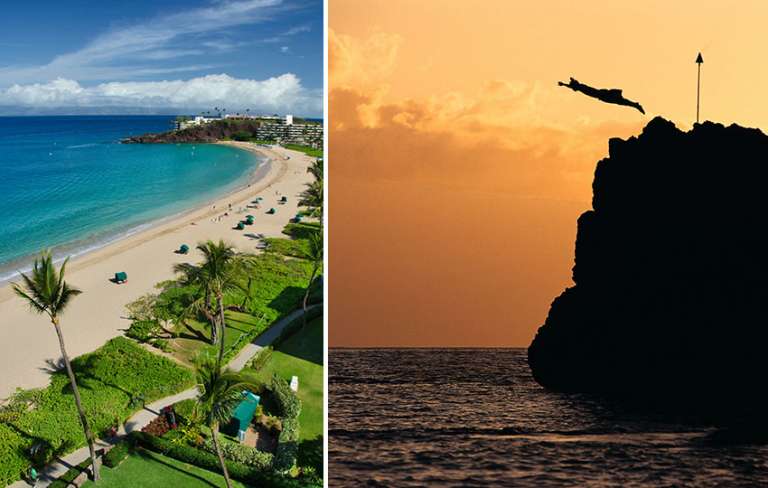
The history of Ka’anapali Beach dates back nearly 250 years to the legend of the king of Maui – Kahekili II – who would demonstrate his bravery by diving 400 feet into the sea from a cliffside Black Rock. Kahekili would force his warriors to do the same; showing him that they were fearless, loyal and bold. The very same iconic Black Rock still stands at Ka’anapali Beach today. The feat is emulated once a day at five p.m., when a diver stands at the top of the rock, recites a Hawaiian chant, offers a torch and lei to the ocean, then leaps into the sea without making a splash. And, after a day of activities, there was no better way to enjoy a five p.m. cocktail hour while swimming and marveling at the man’s heroic dive. PR reps, take note of this brilliant marketing strategy.
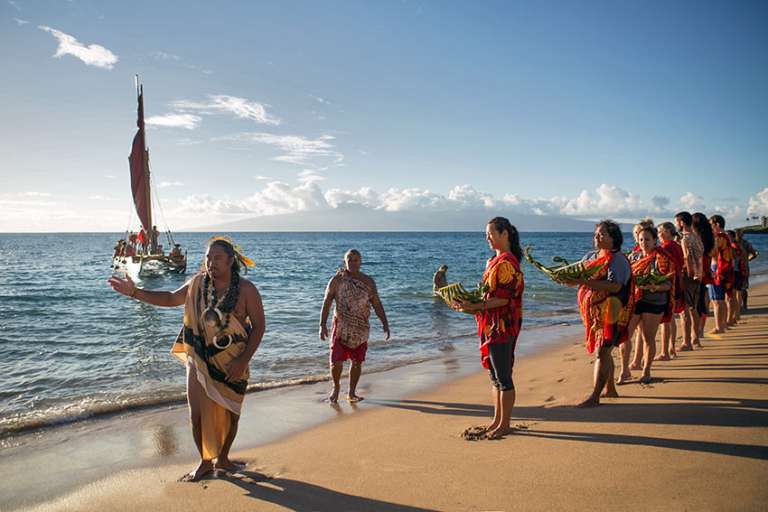
Ka’anapali Beach Resort is the original master planned resort in the Hawaiian Islands, and has become the benchmark for all other self-contained resort destinations. Its diverse location can appeal to any kind of traveler when it comes to activities. Not only has it been rated as a top beach in the world, which lends itself to multiple water activities, but the mountains of Maui are behind the resort, also rich with things to do.
Hawaiian Regional Cuisine is available at all Ka’anapali Beach Resort restaurants, which continues to welcome global visitors and make them aware of the beauty of Polynesian culture through the amazing cuisine, which has changed the way the world prepares food, by mixing traditional and inclusive combinations of flavors from a variety of cultural influences.
I’ve always been impressed how Ka’anapali Beach Resorts embraced traditional Hawaiian history and culture; taught the world that it is possible to mix culture, recreation and community in a world-class setting. Ka’anapali Beach Resort, in Maui, is an exotic location with a unique eco-system and rich culture that you can experience without leaving the U.S.
Number Three (3) on the list is the swimming pool at Sun Valley Resort.
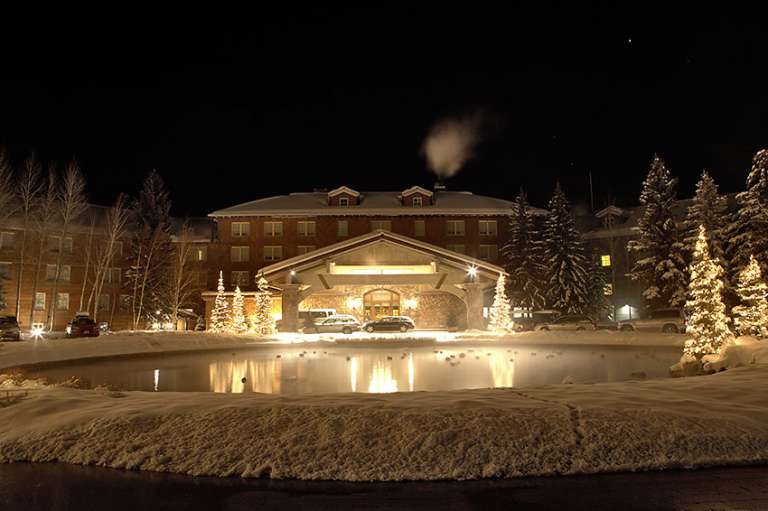
The swimming pool at Sun Valley Resort.
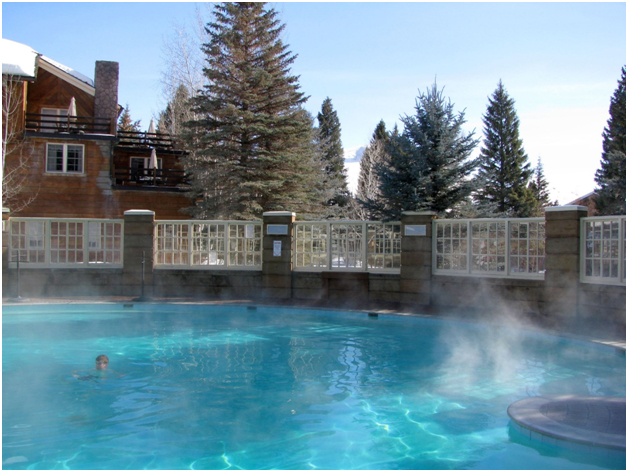
As I sat on the edge of the resort’s famous outdoor circular pool, it was so cold outside that I couldn’t see across the surface, due to the fog and steam. I began to contemplate if I would have noticed Ernst Hemingway if he was in the pool, before realizing he was probably pounding away on For Whom the Bell Tolls, in the Ernst Hemingway Suite at the Sun Valley Lodge.
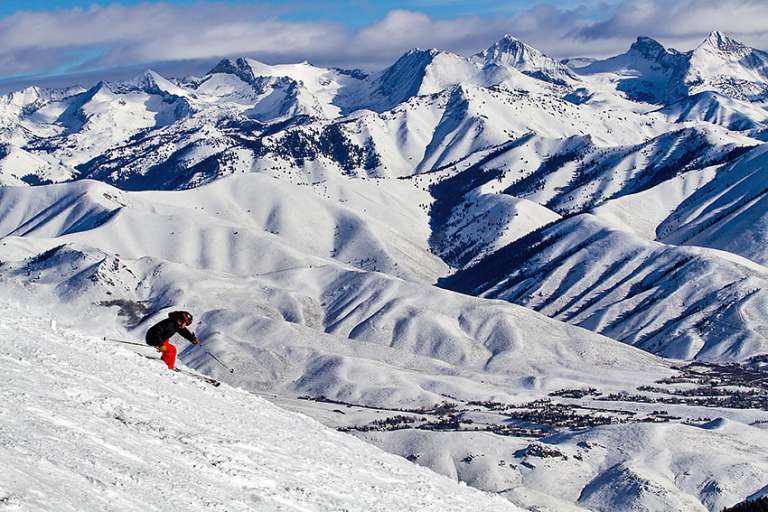
In 1935, Austrian Count Felix Schaffgtosch was hired by Averell Harriman of Union Pacific Railroad to find the perfect location for a grand American resort. It should be noted that the U.S. diplomat Harriman helped seal the Lend-Lease deal between the U.S. and Great Britain in the early days of WWII. After fruitless months of searching the mountains of the west, the count became aware of Ketchum, a dying mining town in Central Idaho. He quickly made a sharp U-turn to Ketchum, and was overwhelmed by what he saw. He immediately wired Harriman with these words: This combines more delightful features than any place I have ever seen in Switzerland, Austria or the U.S. for a winter resort. Harriman rushed over to join him, and purchased 4,300 acres of what was to become Sun Valley Resort. Harriman was determined to build Sun Valley into a resort worthy of its majestic setting, which would include a timeless four-story mountain lodge, complete with a glass-enclosed pool, world-class cuisine, ice-skating rink, impeccable service and nightly orchestra performances. After seven months of construction, Sun Valley Resort opened in the winter of 1936. And the PR was nothing less than brilliant, where Harriman shrewdly marketed the resort to the Hollywood elite, in an effort to drum up publicity. Celebrities such as Gary Cooper, Ingrid Bergman and Clark Gable, were invited to enjoy the resort without spending a penny in their own pockets. The PR spread across the globe and Sun Valley became known as the place of the stars. Soon local wildlife was sharing the mountain with Hollywood royalty. And the resort wasn’t just for relaxation either, as world-class athletes used the mountain for Olympic training.
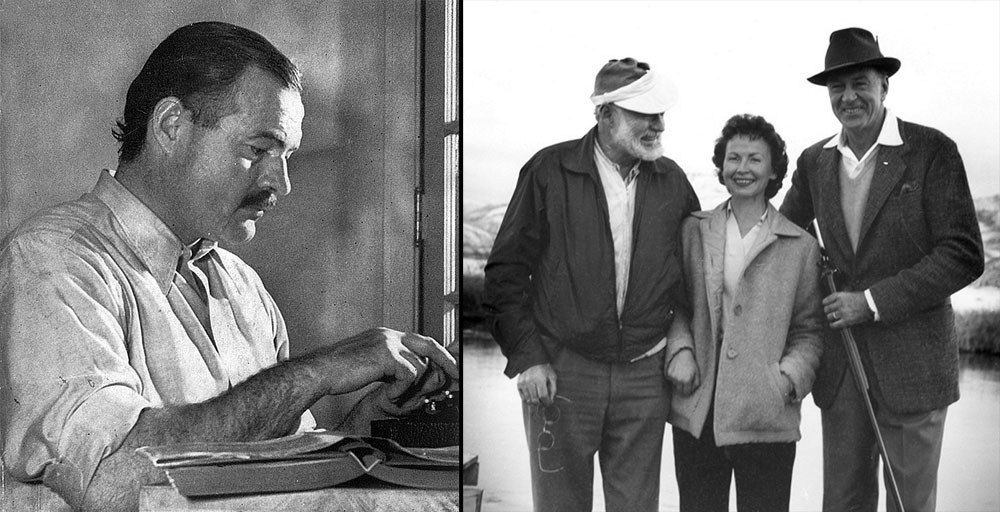
Ernst Hemingway, an avid hunter and fisherman, was overwhelmed by Sun Valley’s vast great outdoors, which he found both recreational and inspirational, and could also be enjoyed with solitude and anonymity; unlike the new breeds of celebrities today, where no form of anonymity is ever warranted.
And the selections continue with Number Two (2)…
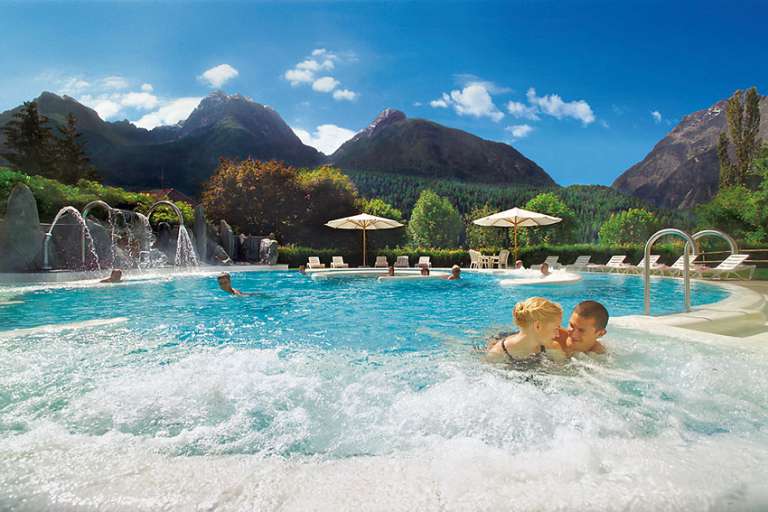
The Engadin Scuol Health and in Bathing Center in Switzerland.
The Engadin Scuol Health and Bathing Center has developed into one of the world’s major health and wellness destinations.
As my eyes took in the spa’s holistic waters, surrounded by the Swiss Alps, it was easy to see that the quotation: A picture is worth a thousand words; an advertising slogan by Fred R. Barnard, was really true.
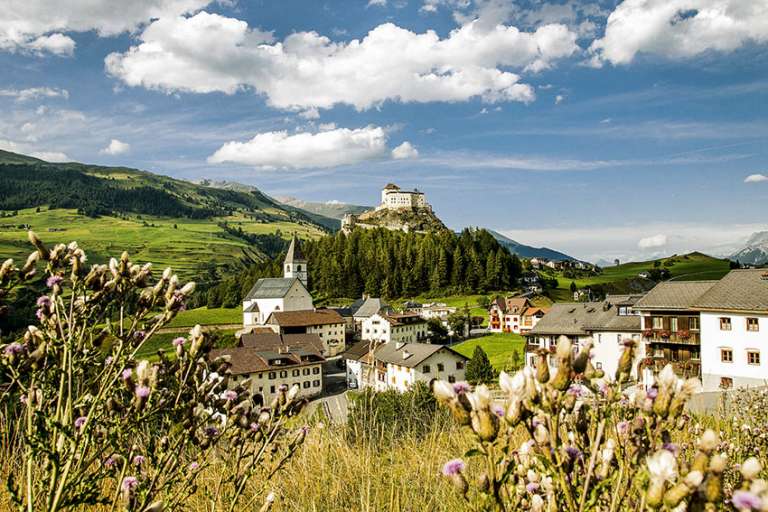
Scuol lies cradled between the peaks of the Silvretta range and the Engadin Dolomites. This holiday area has retained its native cultural values and natural surroundings.
But, before plunging into its holistic waters, stand warned: never jump into the pool’s spa waters before showering first. You’ll find that North Americans are considered to be somewhat dirty, and, if the staff notices you haven’t showered first, there’s a chance you’ll be issued a one-way ticket back to the Canadian provinces or U.S. states.
Plus, you might miss the historic 2½ hour-long Roman-Irish Bath, a blending of two ancient cultures. The Romans believed in the health benefits of steam baths of varying temperatures, while the ancient Celts enjoyed a combination of bathing in hot water, followed by dry air. This rejuvenating bathing tradition encompasses 10 different stations, beginning with an invigorating massage, and ending with a 30-minute nap with the Swiss Alps as a backdrop.
I’m not going out on a limb when I proclaim Switzerland to be one of the world’s most spectacular tourist destinations. Within an area roughly the size of the state of Maryland, there is such an abundance of awe-striking beauty, recreational activities and cultural attractions that the nation has become a Mecca for visitors of every age and nationality.
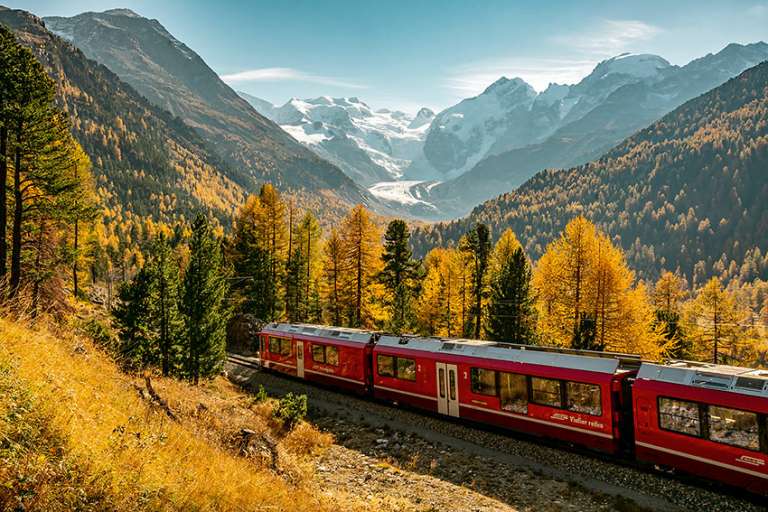
The varied Alpine world of the canton of Graubünden is brought within reach by a dense network of railways that offers journeys so scenic that many visitors can’t resist hanging their heads out train windows to bask in a world of lush valleys, sweeping mountain peaks, glacier-fed rivers and lakes. And it is in this spectacular Alpine valley region, where you can witness some of the wildest and most breathtaking landscapes on the globe.
And closes, with the Number One (1) favorite swimming pool in the world…
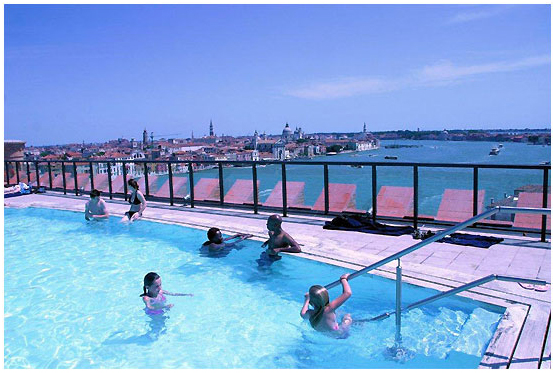
The Molino Stucky Hilton in Venice, Italy.
At first, it seemed strange that we would be staying at a Hilton property in Venice, but that was before my eyes set on the palatial Molino Stucky, a former flour mill that has been painstakingly refurbished into a swank hotel, but still very much in the Venetian character. While luxuriating by the roof top pool, with Venice’s unforgettable city skyline in the distance, it occurred to me that I was experiencing something that even a Doge in all his glory would find unimaginable.
Earlier, after charging through the congested streets of Venice, I somehow managed to reached the Bridge of Sighs, where the crowd had grown so thick that (ironically) I could barely look above the mandatory Venetian straw hats to get a glimpse of the famous window. Of course, this is the window which prisoners would pass and take their final view of Venice before their descent into the darkness of the dungeons. A petite woman, almost hidden in the crowd, asked me to take a photo of the window with her camera; for she could not see what it looked like outside. As I returned her camera, she politely smiled a thank you and disappeared before I could say goodbye. My own personal sigh illustrated that I needed a break from the sweltering hordes of tourists, and it was best to take a reprieve.
My cruise pass allowed me two days of lodging at the Molino Stucky Hilton, which not only included dips into Molino’s almost unimaginable terraced swimming pool, but trips to Stucky’s Rialto Bar & Lounge, which offered complimentary regional snacks, coffee and the Venetian mainstays of spritz, grappa and Prosecco. Both the rooftop pool and Stucky’s bar and lounge, proved to be a welcoming venue to relax and refresh. Plus, my batteries were soon recharged for a further exploration of Venice’s major attractions. This time, hopefully, with less heat and crowds.
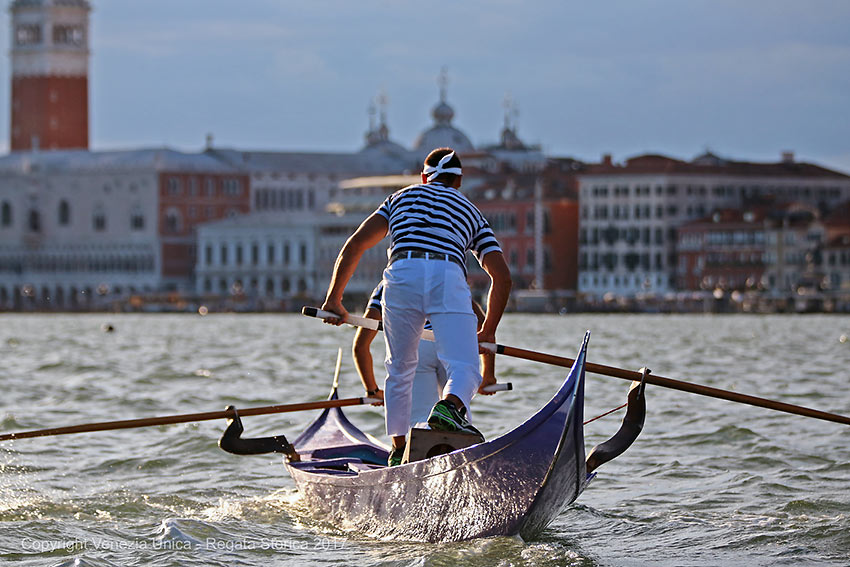
Venice is built on an archipelago of 118 small islands, formed by 177 canals in a shallow lagoon, connected by 409 bridge and remains the only functioning city in Europe in the 21st century where every form of transport is entirely on water or foot. Also the main public transportation means – motorized waterbuses (vaporetto) – which serve regular routes along the Grand Canal and between the city’s islands.
As a city built on water, Venice offers a strong relationship with its citizens in their natural element. So, one of the main activities for a Venetian in their leisure time is to be close to water. Most local people own a boat, either a sailing one, rowing one or with a motor. When summer arrives, everybody seems to take out their boats. There are also many traditional rowing or sailing boats, which were created from the local environment, that can be considered as a piece of art for their design and construction. Besides the great deal of rowing boats in Venice, the most famous one is the gondola, which is conducted in a standing position, something very unique to this city. Even the sailing boats have special shapes in both the hull and the sail, to be able to cross shallow waters.
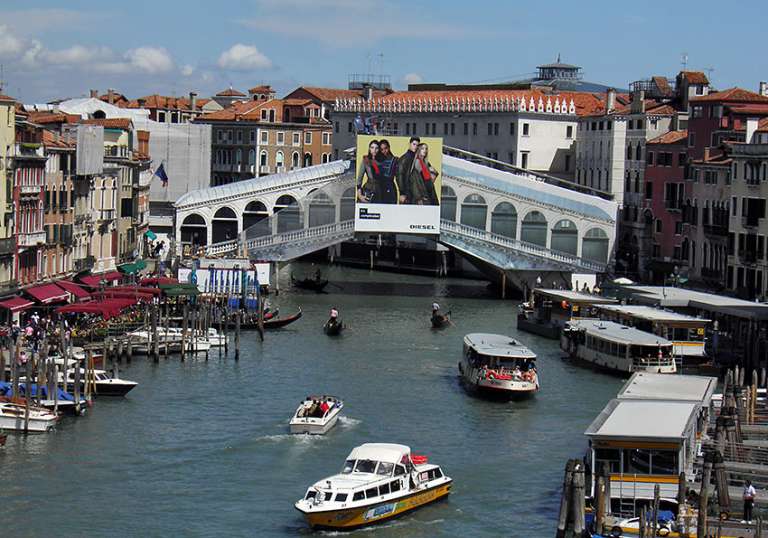
To keep the boating tradition alive, there are many local associations, along with the City of Venice, organizing various events in the lagoon such as regattas, races, parades, etc. Many of the most important traditional feats, still celebrated in the city – Festa del Redentore, Festa de la Sensa, the Historic Regatta – take place on the water, offering citizens and visitors both sports and culture at the same time. In recent years, there has been an important movement entitled, the Vogalonga, a non-competitive race which started as a local protest against motor wave movements. It has become a worldwide appointment for all sorts of rowing boats. Motor wave movement is still a great issue inside the Lagoon of Venice because more and more people enjoy outdoor weekends between the island of the lagoon and at the sea, using motor boats with speed engines that erode salt marshes and damage the edges of the city.
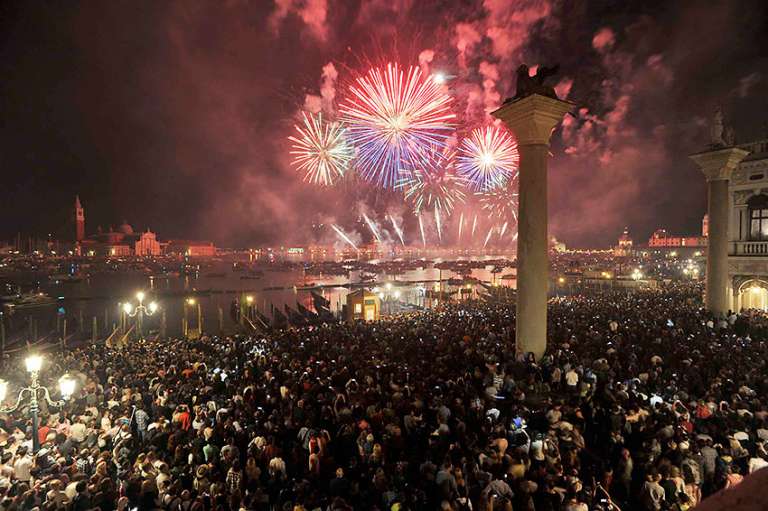
And, the Molino Stucky Hilton in Venice will always remain in my heart, as well as the most essential stay at my favorite swimming pool destination in the world.























Douglas
April 5, 2024 at 12:05 pm
Fascinating that you were able to connect all of these ideas in the lowly Swimming Pool.
I’m not taking swimming pools for granted from now on.
Ed
April 5, 2024 at 7:30 pm
Hi, Douglas… when it’s hot outside, and sometimes when it’s at the point of becoming life threatening… such as pools that I’ve cooled off in Death Valley or Sedona… you take for granted even more. Feel free to join the T-Boy pool next Sept in SoCal at designer’s Raoul Pascual’s home. If either of you are not too wet, there’s a chance he’ll sketch one of his hilarious caricatures of you. Better yet, email a pic of yourself now to
**@tr**********.com
and I’ll forward to him. Ed p
Ed Boitano
April 7, 2024 at 2:09 pm
Thank you, Douglas. It’s always rewarding to receive comments from readers, in particular your one of praise. With swimming pools, all I can say, is that I call them as I see them. Ed
Dana
April 5, 2024 at 12:09 pm
I wish I had a pool. Always wanted one. But someone told me that it was so high maintenance — lotsa chemicals, PHP levels, pumps, filters, and electricity that you needed to spend for even when you weren’t using it. So I’m content just going to the YMCA or the beach.
Swimming pools are just a modern invention, right? Turn of the century idea, right? I wonder how they maintained them then. Do you? Did you ever own a pool?
Don
April 5, 2024 at 12:10 pm
Beautiful example of pools. Good research!
Ed
April 7, 2024 at 2:05 pm
Thank you, Don. But all kudos should really go to Deb Roskamp, T- Boy photographer extraordinaire.
Deanne Reynolds
April 10, 2024 at 10:11 am
I loved this article as I am a big fan of swimming and swimming pools. Are you aware of the very cool pool at Amangiri in Utah, built around a rock formation? Check it out.
Tonychisholm@rogers.com
April 10, 2024 at 3:50 pm
Great article . Interesting and fun. The super photos help.
Thanks. Tony